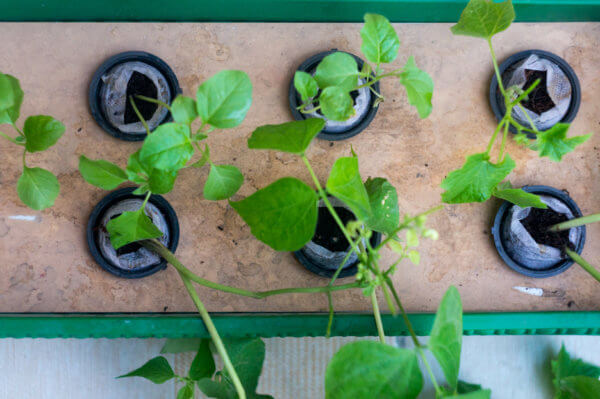

Coconut coir comes from coconut palm husks, which make up the brown, fibrous part tucked between the white inner flesh we eat and the green outer shell of a coconut.
Also called coco coir, this growing medium can either be used solo or mixed with another material, such as perlite it all depends on what you’re using it for.
Why Use Coconut Coir?
Coconut coir, like Mother Earth® Coco (which is made in RHP-certified facilities to help ensure high quality), is often used as a substitute for peat moss in hydroponics systems and container gardening, and for good reason. For one thing, unlike peat moss, coconut coir is a renewable resource. It also has a more neutral pH, which makes managing the nutrients in hydroponics systems easier.
Coconut coir also decomposes much more slowly than peat moss (think decades rather than months), meaning it releases fewer nutrients into the water that might throw the nutrient solution out of balance. That’s important because, in hydroponics, the makeup of the nutrient solution has a huge impact on growing success.
Coconut Coir Products to Choose From
Coconut coir is available in several formats:
- Loose media, such as Mother Earth® Coco, which can be used either alone or with other amendments, like perlite;
- Compressed blocks of bulk coconut coir, such as the Mother Earth® Coco Bale, which are rehydrated and broken apart before use;
- Shaped coconut coir products, like Mother Earth® Coco Basket Liners and Mother Earth® Coco Mats, for specific hydroponic uses (think lining baskets, placing under pots);
- Charged coconut coir, including Mother Earth® Charged Coco®, which has been pre-treated with a nutrient mix to make it easier for new plants and transplants to get growing;
- Coconut coir mixes, such as Mother Earth® Coco + Perlite Mix, which provide improved airflow around the root zone of your plants.
Using Coconut Coir in Hydroponics
Coconut coir can be used as the growing medium for both seedlings and mature plants, as rooting mats and growing baskets, and for rooting cuttings. No matter what form of coco coir you’re using, always wet it thoroughly before you plant, and pay careful attention to the moisture level during the growing process. When starting seedlings or rooting plant cuttings, it’s a good idea to mix some perlite in with the coconut coir to help increase air circulation in the root area.
When using this growing medium in a hydroponics system, be sure to use a buffered coco coir like Mother Earth® Coco so it won’t tie up the calcium and magnesium in the nutrient solution. (This is not the same as buffering for pH, which isn’t nearly as important with coco coir as it is with peat.) You should also make sure to use a nutrient solution that is specially formulated for use with coconut coir (the label will tell you).
Using Coconut Coir in Container Gardening
Garden soil and container garden potting mixes also benefit from the addition of coconut coir for moisture retention. It’s an excellent choice when you want to help fast-draining soils hold onto water a little bit longer.
Whether used in hydroponic systems or in containers, by itself or mixed with other media, coconut coir can play a key role in providing an ideal growing environment for your plants.




